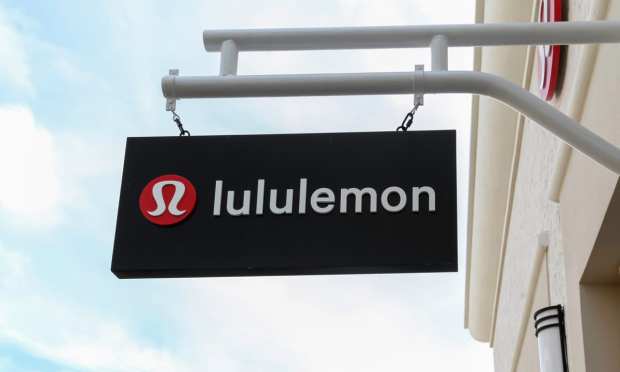Lululemon ‘Strategically Using Air Freight’ To Build Inventories

High-end athleisure apparel leader Lululemon said it is looking to grow its inventory by 25 to 30 percent this quarter and use more air freight to circumvent port delays that have bogged down the global supply chain.
In outlining its first-quarter results for the three months ended May 2, the Vancouver-based retailer said inventories were up 17 percent from last year or 29 percent on a two-year basis, noting that it was comfortable with its current position but was taking steps to stay ahead of the curve as far as any future bottlenecks are concerned.
“While we continue to see some delayed inventory receipts due to issues at the ports, our team is strategically using air freight [to offset that] and we are comfortable with the level and composition of our inventory as we move into Q2,” Lululemon CFO Meghan Frank said on the company’s earnings call.
Input Costs OK For Now
In terms of input costs, Frank said Lulu was “not seeing any material impact” in 2021, noting that anything it was experiencing was already reflected in the company’s guidance.
“We definitely have a close eye on the market and are managing and mitigating any pressures as we move into fiscal 2022,” Frank said, promising to share any details as they develop.
While countless businesses and industries are contending with a mix of rising costs and attempting to offset them via price increase, Lulu was noticeably sanguine about the situation.
“As it relates to pricing, because we’re not seeing any direct pressure there this year, we’re comfortable with our strategy through [so far this year] and are working with the supply team on any potential changes that we may need to implement moving into fiscal ‘22,” CEO Calvin McDonald said in response to analysts’ questions.
“We’re constantly evaluating our range and looking at the new innovation coming and pricing accordingly to drive the best value for our guests,” he added.
Seeing More Growth Ahead
All of this is taking place at a time when the maker of women’s and men’s apparel generated $1.2 billion in sales last quarter, marking an 88 percent increase in revenues, including a 125 percent jump in international sales, 50 percent growth in eCommerce with 45 percent penetration of its direct-to-consumer (D2C) business.
Lulu said its results were fueled by continued expansion of its eCommerce business as well as a rebound in brick-and-mortar stores.
Although shares of Lulu have slid 20 percent from an all-time high last September and are down about 8 percent year to date, management remains confident in the company’s growth trajectory and the uptick in casual, athletic clothing that is driving it.
“We strategically managed a number of ongoing macro operating challenges,” McDonald said, including continued store closures, capacity constraints and supply chain challenges.
“While challenges of all types will no doubt remain going forward, I am confident we will continue to manage them effectively and deliver outstanding results,” he added, predicting that Lulu would continue to strengthen each quarter as the 23 year old brand was still very early in its growth story.
“Lululemon is well positioned for the post-pandemic world and the opportunities ahead of us are significant and continue to expand,” McDonald concluded.